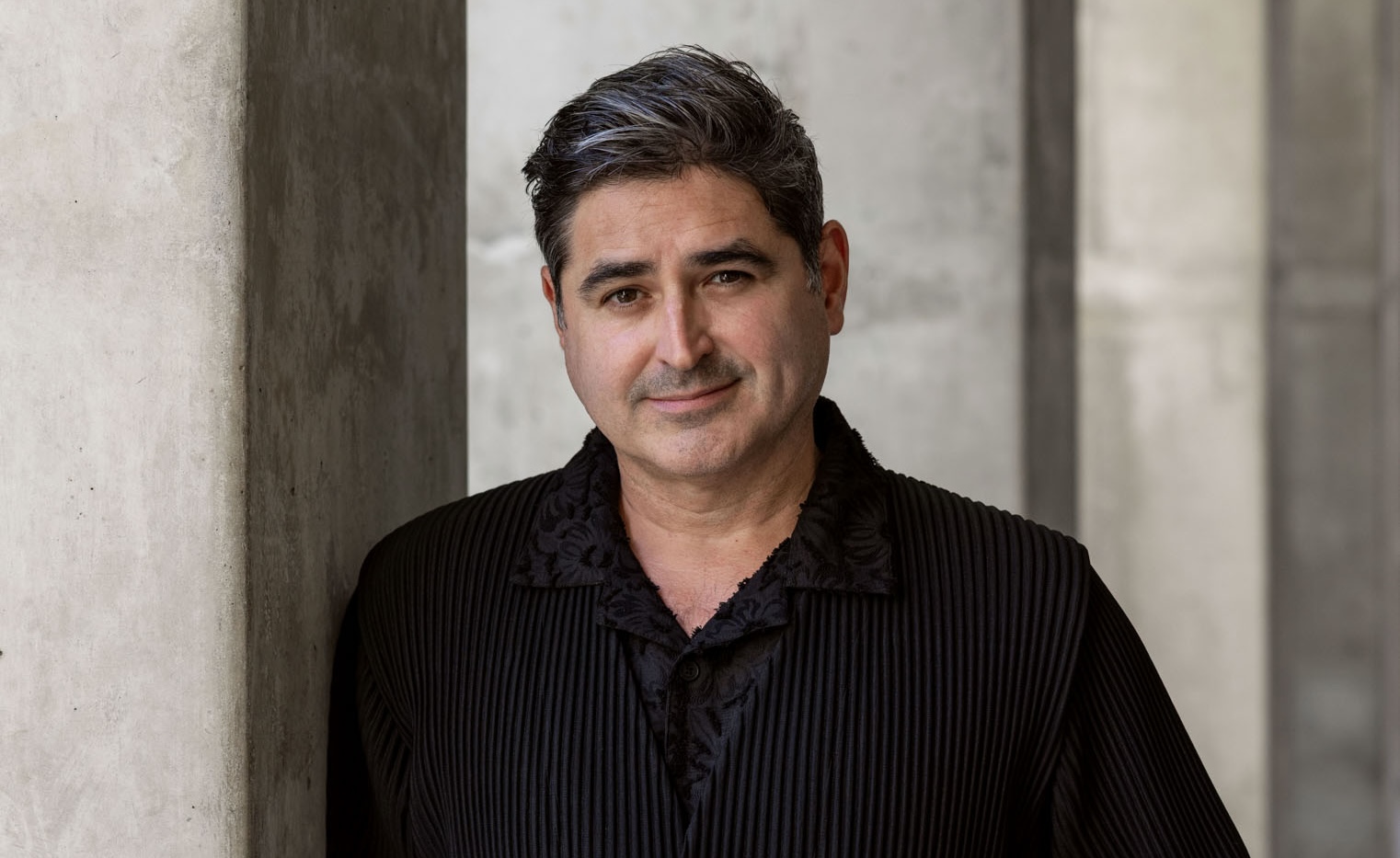
Photo by Rafael Soldi

Audio By Carbonatix
José Carlos Diaz’s journey as a curator has taken him as far away as Pittsburgh, Seattle, and even Manchester in the U.K. But somehow, he always ends up back home.
The Miami curator has held positions at the Rubell Museum, the Bass, and the former Miami Art Museum (now the Pérez Art Museum Miami) between jobs further afield. Now, the Mexican-American local is returning to take on what may be the most prestigious role in Miami’s art ecosystem: chief curator and senior director of curatorial affairs at PAMM. It’s a far cry from his early days in the city, showing art out of his own apartment.
“Being a part of the history, part of the social fabric of Miami’s art scene is really something that I think is so incredible,” says Diaz, who got his start running the D.I.Y. art space Worm-Hole Laboratory. “Miami has really transformed; it’s really grown as a city and as an art scene. And so to come to what I think is the anchor arts institution of Miami, it’s kind of like a dream come true.”
Diaz was able to use the city as a launchpad for his own career in the 2000s. Among his achievements are curating shows featuring Paola Pivi and Farhad Moshiri at the Andy Warhol Museum, as well as a variety of exhibitions at the Seattle Art Museum. His work in the Pacific Northwest included everything from Japanese woodblock prints (“Hokusai: Inspiration and Influence”) to modernist masters (“Calder: In Motion”) and South Florida artists (“FriendsWithYou: Little Cloud Sky”).
This year, make your gift count –
Invest in local news that matters.
Our work is funded by readers like you who make voluntary gifts because they value our work and want to see it continue. Make a contribution today to help us reach our $30,000 goal!
Despite this geographically diffuse career, he’s been able to observe the growth of the local arts community over the last two decades. Based on his previous experience and knowledge of the area, Diaz doesn’t feel like he’s flying in blind. For a city like Miami, that’s important.
“Institutions often hire directors and curators from other places,” he says. “[But] I’ve also continued to observe and to communicate with the local artists. And I know that’s really important to Miami. I wouldn’t say I’m coming in as a new person. There are just so many people that I already know. I’m really excited to engage with them. And I think part of this role is going to allow me to really connect or strengthen the bond between the local art scene and the Pérez.”
In particular, he praises the variety and breadth of the scene, covering “everything from outdoor art and graffiti to paintings in the gallery” and extending from central areas like Wynwood to far-out suburbs such as Doral. He also notes that attention to the city’s art scene is no longer limited to just the first week of December, when Art Basel Miami Beach takes over the city.
“There are 365 days of art now. And I think that it’s incredible that you can visit Miami as a tourist, and there’s always going to be some sort of art activity,” he continues. “But the scene itself is really welcoming, I think, to new artists or new art lovers. And even since the pandemic, there’s been a growth of population, a growth of people having an interest and learning about art. And I think that a role that museums can play is educating people, but also getting them interested in art. I think modern and contemporary are really easy gateways into becoming active in the art world, or even in the art scene in Miami.”
That focus on modern and contemporary art is both a strength and weakness for Miami, Diaz says, as there is a certain focus on the art market that comes from the presence of Basel and other art fairs. In Seattle, he’s able to draw from a more historical art collection than Miami’s. At the same time, here, he’ll also be able to harness an even greater local resource: the city’s local artists. PAMM’s existing curatorial staff have been adept at boosting locally-born and South Florida-based artists, supporting the likes of Jason Seife, Elliot & Erick Jiménez, José Parlá, and Antonia Wright.
“We don’t need to be these monolithic spaces where nothing changes,” he says. “For PAMM to continue to highlight local artists, maybe giving them their first solo exhibitions, that’s something that I’ve learned is really important and extremely meaningful. Giving them their first exhibition, perhaps their first series of programming, publication, acquisition — these things are extremely meaningful, which is beyond just bringing in, you know, an Ai Weiwei exhibition to your city.”
Diaz also hopes the museum continues to serve as a third space for Miami, a place separate from work and home that can serve as a community resource.
“We want people to come to museums to meet with their friends, have a coffee, charge their phones, consider it a space to learn, laugh, and have fun,” he says. “My approach to art is really making it accessible. I think a five-year-old or a 90-year-old should come into an exhibition and feel like it’s really interesting and really engaging. I don’t want an artistic experience or a museum experience to feel elitist or unwelcoming. I think that’s something that I’ve learned, that all museums are really trying and struggling for. But the Perez Art Museum — it’s an extremely diverse collection, and it’s an extremely diverse staff, and I think museums really aspire to diversify their collection and certainly have a staff that reflects the community. I think that’s something that I’m really honored to be a part of.”